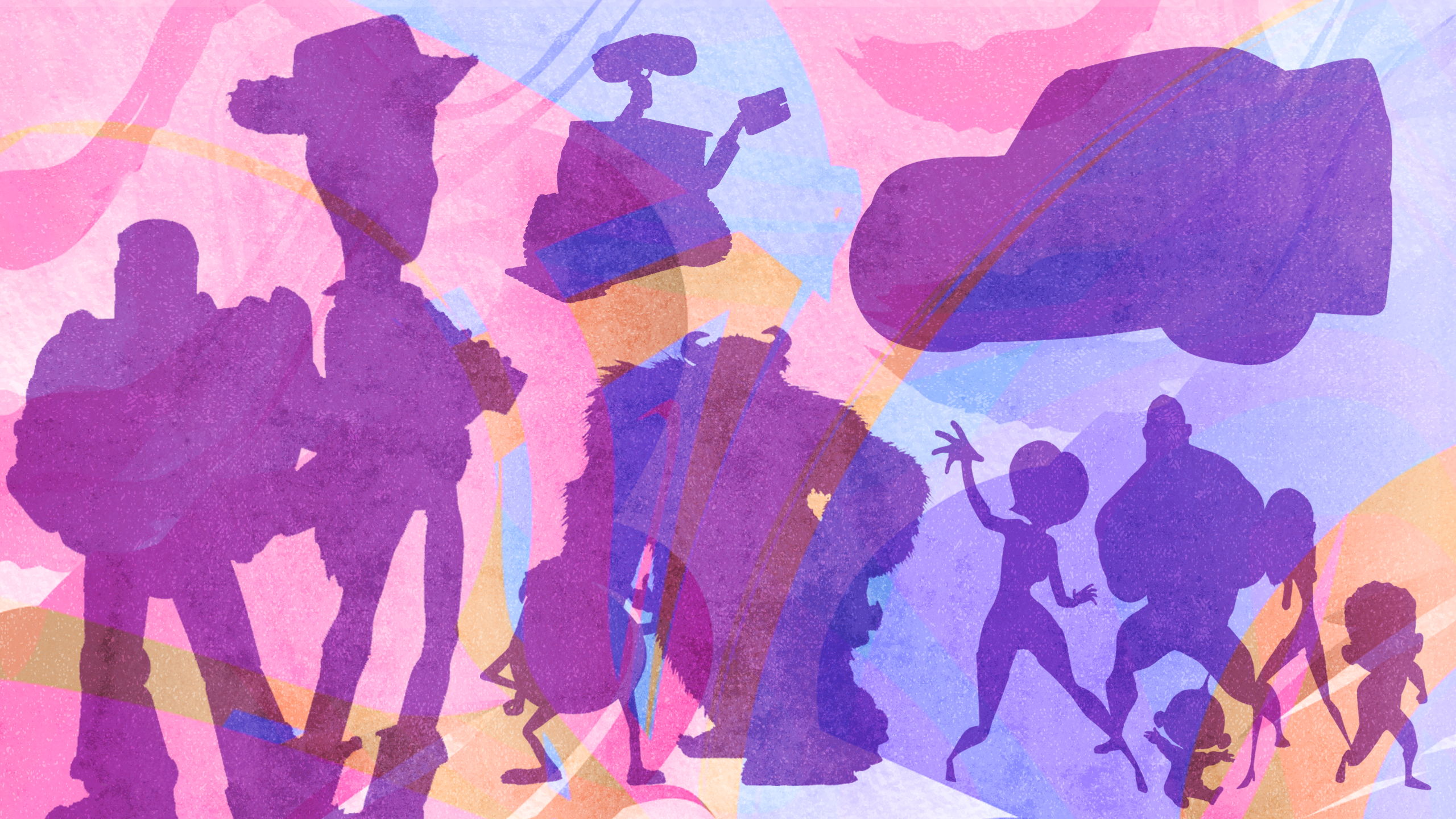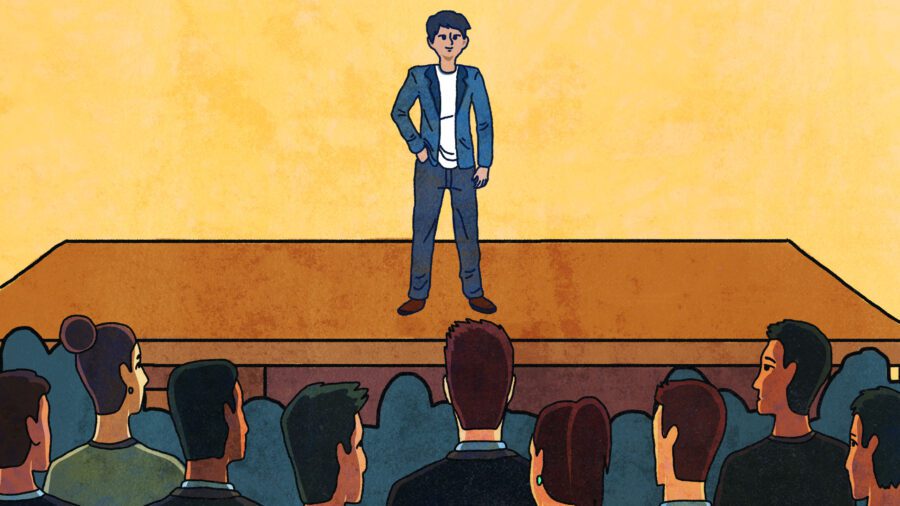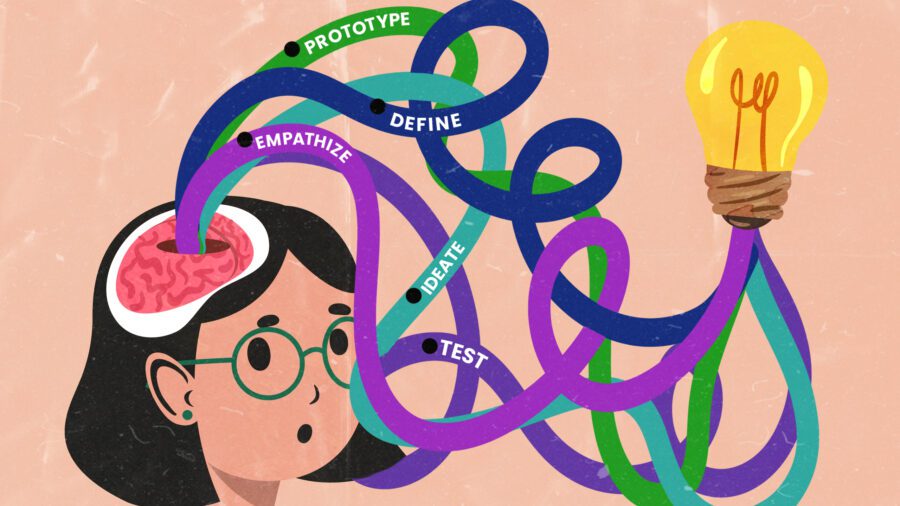
The Story of Pixar and What It Means for YOUR Ability to Cultivate Creativity on Demand
Do you know how to cultivate the best atmosphere for creativity in the workplace while also harnessing your own ability to create?
Often, it can be challenging to get on-demand creative output. Although creative inspiration isn’t always an instant process, you can use tools for yourself and your creative team to produce groundbreaking results.
This process is perhaps best exemplified by Pixar Animation Studios. Since the studio began releasing feature films in 1995, it’s solidified its place as an essential part of American cinema with its heartfelt writing, unforgettable soundtracks, and innovative animation that appeals to children and adults. The company also created important innovations that forever changed the film industry. Unsurprisingly, the studio has won 18 Academy Awards, 10 Golden Globes, and even 11 Grammy Awards.
It’s no accident that Pixar has become an important staple of American pop culture — the company’s managers and creative teams worked hard and smartly to produce the best results. You can learn from the company’s creative success to enhance your team or your own creative process.
In this article, you’ll learn all about the history of Pixar, managing a creative team, and uncovering creative inspiration.
The Early History of Pixar
The story of Pixar began in the mid-1970s when new computer graphic technology inspired creatives across the globe. Many were interested in seeing how this new technology would take shape and change the way people made movies, but computers weren’t advanced enough to actualize such an idea.
During this period, the New York Institute of Technology hired Ed Catmull, Malcolm Blanchard, David DiFrancesco, and Alvy Ray Smith. Catmull and Blanchard already had some 3D software design experience, and DiFrancesco and Smith had helped develop software that enabled artists to alter pixels for creative purposes.
The group developed a workflow that involved utilizing computers for traditional, hand-drawn animation. Using computers, the team could automate parts of the animation workflow to speed up the process of completing single frames. When you watch a movie, there are usually 24 frames per second, which creates the illusion of movement on the screen.
In 1979, the team used their new computer-based workflow to create a 22-minute short called Sunstone, which still heavily utilized the conventional hand-drawing animation process.
From there, the team pivoted and began working for Lucasfilm Ltd., George Lucas’ studio, a year after the original Star Wars film premiered. There, the group worked on developing three-dimensional effects. You can see these effects briefly in Star Trek II: The Wrath of Khan and Star Wars: Return of the Jedi. Although the three-dimensional sequences may not appear impressive today, it was a groundbreaking innovation at the time.
Unfortunately, George Lucas went through a costly divorce the same year as Return of the Jedi, forcing him to gut his Computer Division. The animation team saw the writing on the wall and realized it was time to move on from Lucasfilm.
By then, the team had grown to around 40 people, so Ed Catmull and Alvy Ray Smith got to work coming up with a plan to create a new company that could employ the entire team.
Catmull and Smith decided to focus their efforts on becoming a hardware company, selling their special-purpose Pixar Image Computers.
They struggled to find funding for the company, but the team found a notable venture investor who was emerging as a leader in his field — Steve Jobs.
From there, Pixar became an independent company with Ed Catmull as President and Alvy Ray Smith as Executive Vice President.
The Imagination and Creativity of Pixar
In addition to being a hardware company, Pixar produced a series of innovative shorts. In the late 1980s, they made Luxo Jr. — which features the lamp from Pixar’s famous intro — Red’s Dream, Tin Toy — considered a prequel to Toy Story — and Knick Knack. Luxo Jr. was nominated for an Academy Award while Tin Toy won the prestigious recognition.
With each short film, Pixar’s graphic animation became more impressive. The company also developed a Computer Animation Production System for Disney to improve their animation workflow. Disney produced 18 movies using the system, including Beauty and the Beast, Aladdin, The Lion King, and other iconic films.
Pixar’s next important advancement was the RenderMan software, which quickly became Hollywood’s industry standard for animation and visual effects.
By this time, the company struggled heavily economically, and Steve Jobs wound up buying Pixar entirely. Fortunately, the company’s computing power could now feasibly create a feature film. Pixar’s existing relationship with Disney paid off as the massive media conglomerate financed the company’s first film, Toy Story.
It took Pixar four years to create Toy Story, and it became an immediate success with widespread critical acclaim and a gross of $373 million at the global box office.
Jobs capitalized on the film’s success and took Pixar public. The company had the biggest initial public offering of 1995, making Jobs a billionaire and solidifying Pixar’s place in the film industry.
The Toy Story animation company went on to create 25 more feature films as of 2022, and Disney purchased the company in 2006 for $7.4 billion.
Join In 200 Million+ On The Journey to Greatness
Pixar’s Creative Genius: The Braintrust
An important part of Pixar’s immense success with its innovative films, critical acclaim, and lucrative box office numbers has long been the company’s top-notch creators and managers.
In his book Creativity, Inc.: Overcoming the Unseen Forces That Stand in the Way of True Inspiration, Pixar Co-Founder and President Ed Catmull details the “Pixar Braintrust,” where different creators would hold meetings discussing the creative vision for films while also providing constructive criticism. These meetings feature directors, writers, and artists working together toward a collective vision, and this Braintrust offers valuable lessons to those collaborating with or managing creative individuals.
With the Braintrust’s tremendous success with creative ideas, Pixar tried to implement the strategy in other company departments. They quickly realized that the Braintrust doesn’t work for non-creative departments, and the reason for that was issues regarding authority. In the Braintrust, people offered advice and constructive criticism, but people weren’t willing to offer the same candid feedback to their superiors in other departments.
Additionally, members of the Braintrust could offer notes, but they couldn’t tell anyone else in the group what final decisions to make. This flexibility created a better environment for innovative ideas and new perspectives.
For example, during the production of the 2009 film Up, one of the visual effects producers offered an exceptional idea that saved the company a great deal of money. She felt comfortable expressing that in her view, it made more sense to delay the animation process during the film and have the animators work on larger portions of it all at once. Until that point, the Pixar animators had worked on smaller batches that they needed to revise as production progressed. This resulted in many animators waiting for assignments between revisions, costing the company money.
Per the producer’s suggestion, Pixar began providing animators with larger chunks of work, leading to the animators accomplishing much more. The executives at Pixar failed to realize that they could significantly cut down on animation costs, and it took the visual effects producer’s unique viewpoint to save the company money.
When making a work environment for creativity and collaboration, it’s essential that everyone feels like their voices are heard. People need to feel comfortable expressing their ideas and feedback. You never know who on your team will develop a groundbreaking idea.
Managing Creatives
Ed Catmull is a master at working with creatives and helping them excel. In addition to serving as the co-founder and president of Pixar, he was also the president of the Walt Disney Animation Studios from 2006 to 2018. During that time, he discovered essential managerial guidance for working with a creative team.
One absolutely crucial part of building and working with a creative team is finding the right players. Believe it or not, that doesn’t mean finding the most skilled or talented individuals per se. To get the best ideas, you need to build a team of people who can collaborate well, and sometimes, the most talented or intelligent people don’t work well with others.
Instead of judging your team by its individual team members, judge them by their results. If you’ve compiled a group of highly talented creatives together but they don’t have good chemistry and can’t produce good ideas or work, they’re likely not the right fit for one another. Focus on finding people who complement each other and produce exceptional ideas and results.
Once you’ve assembled your dream team of creatives who work well with one another, it’s time to manage effectively.
Does this mean micromanaging the team and their ideas? No.
Catmull stated that managing creatives is more about managing the dynamics of the team rather than their ideas. It’s about finding the right atmosphere and flow that allows creatives to produce optimal work.
The next time you’re in a meeting with your creative team, consider sitting in the back of the room and simply observing them rather than controlling the meeting. Pay attention to how people contribute and what stops people from coming up with ideas. Perhaps only a few people dominate the discussion, or some individuals feel uncomfortable with expressing themselves. You can uncover the bottlenecks that are restricting the flow of ideas.
When it comes to finding the best ideas, volume is essential. As with the Braintrust, everyone needs to feel comfortable expressing themselves, and you’ll discover great ideas with everyone contributing.
Accessing Your Personal Creativity
In addition to having top-notch managers, Pixar had numerous individuals who could tap into their creativity to produce tremendous work.
Whether solving problems at work or engaging in a personal artistic endeavor, accessing your creativity at a moment’s notice is a valuable skill for getting results.
One great way you can access your creativity faster is by discovering the environment where your creativity excels so that you can recreate that environment.
Are you someone who gets creative results while around other people, or are you more of a solitary worker? Do you prefer working with music or in total silence?
When you uncover the environment in which you thrive creatively, you can access your creative flow more easily.
In addition to discovering your ideal creative environment, you can uncover the times during the day when you more easily enter flow states and feel more naturally creative. Regardless of how intelligent or creative you are, there will always be certain parts of the day in which you have an easier time accessing your creative flow, so why not take advantage of these more creative periods?
Consider writing down the times during the day in which you get the best results and flow creatively, and if possible, adjust your schedule to align with those more creative periods.
Stepping Away to Reflect and Assess
Sometimes, accessing our creativity can feel nearly impossible, and when this occurs, you can take a step back to consciously and unconsciously assess the problem and return with fresh eyes. Regardless of your field or creative medium, you need to take breaks, and these breaks can serve as important moments in which you find creative solutions.
Before stepping away, consider articulating the problem out loud. For example, if you’re a novelist struggling to make headway on a chapter, you can concisely articulate your problem before taking a break. This will help you process it and potentially come up with a solution while away. Perhaps the issue is that you don’t know how to get a character from point A to point B, or you’re struggling to describe the vision that’s in your head.
Once you step away, consider taking a walk outside. This will allow you to feel more energized and relaxed so that you can feel rejuvenated when you return to work. Once you return, you’ll likely have an easier time accessing your creative flow.
Learn More About Excelling as a Manager and an Artist
The secret to Pixar’s success was its extraordinary leadership and creative team, and we can all learn from the company’s emphasis on cultivating a collaborative environment conducive to coming up with great ideas.
If you’re interested in learning more inspiring stories about creators and innovators across different fields and industries, check out other articles on Greatness.com!
Remember, creativity starts with your work environment. Whether managing creatives or creating something yourself, focus on harnessing your environment to get the best ideas and results!
Greatness Authors
Greatness Authors is a collection of writers, thinkers, curiosity experts, and students of the world who are committed to bringing you the most up-to-date, impactful, and inspiring information surrounding Greatness topics.

Redefining Poetry: How Instagram Sensation Rupi Kaur Showed That Poetry Is for Everyone

The Young Professional’s Guide to Advocating for Yourself at Work & Setting Healthy Boundaries

Olympian Yusra Mardini’s Incredible Story of Resilience, Rescue, and Refugee Rights

A Beginner’s Guide to Effortlessly Attracting Money and Growth Opportunities

Psychologist Edith Eger’s Inspirational Journey to Find Forgiveness and What It Means for You










